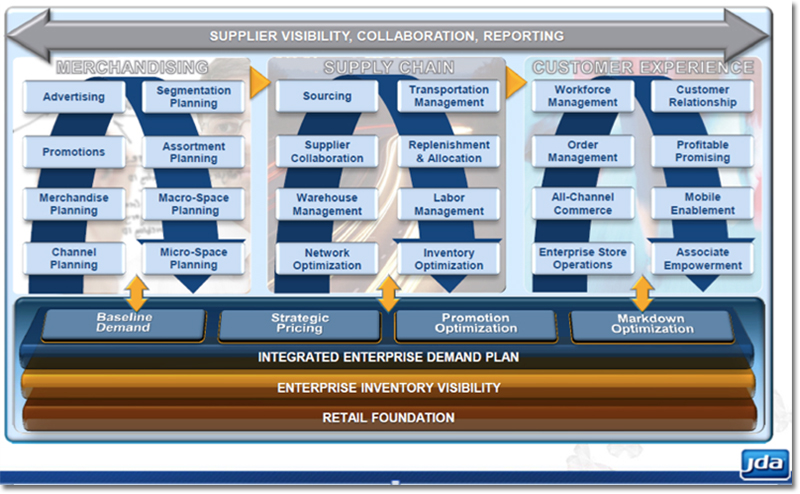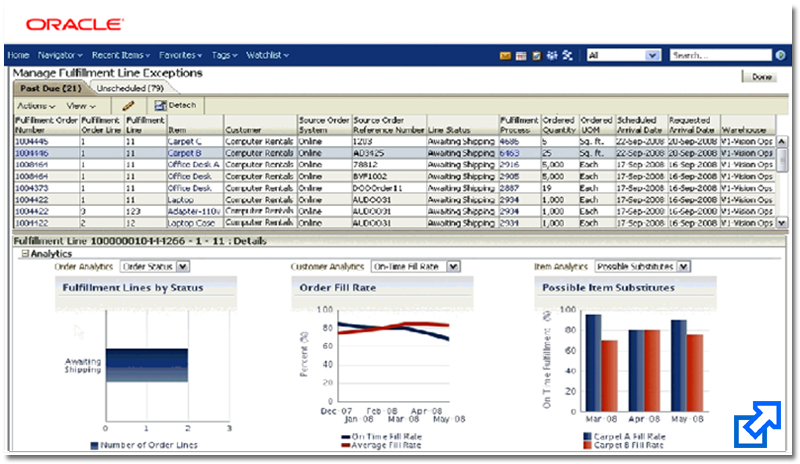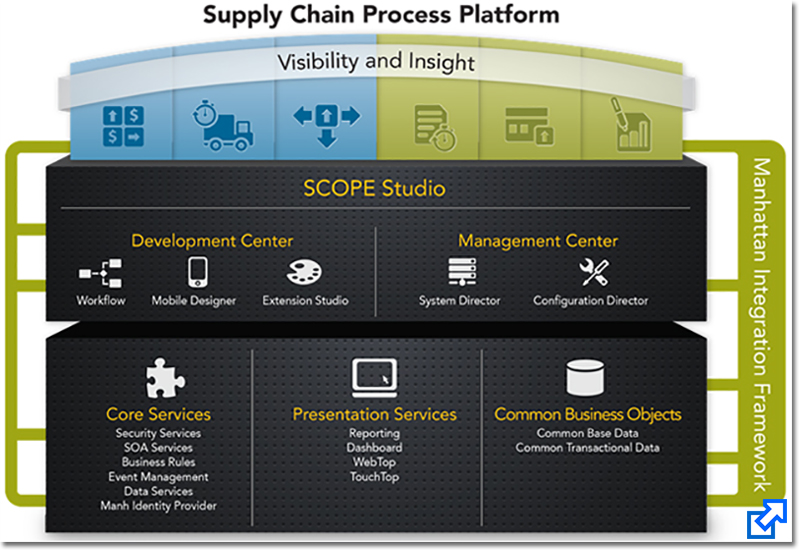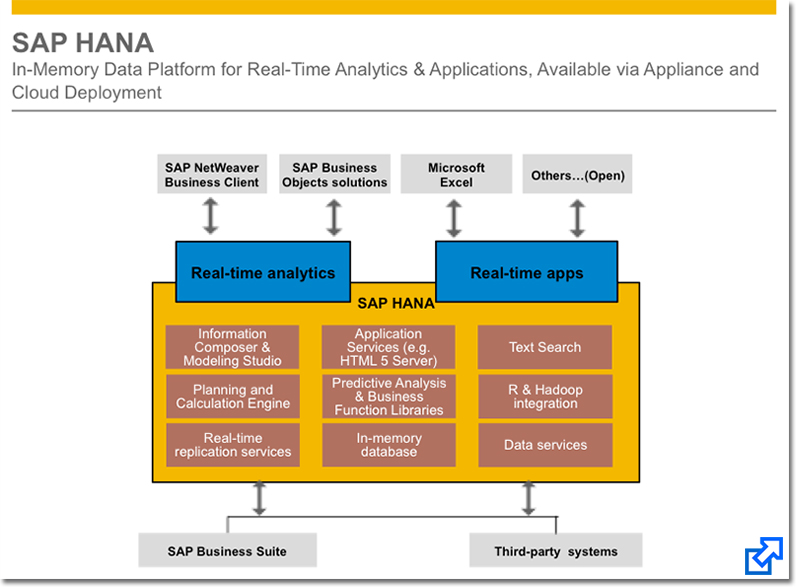Supply Chain Execution Software Convergence
The supply chain software market is evolving toward platforms that optimize end-to-end processes and juggle constraints at all levels. Roberto Michel, Editor at Large, talked to a few leading suppliers who are making progress on this vision.
How can an organization have a full range of supply chain execution (SCE) software at its disposal and still have massive execution problems?
A likely culprit is a lack of integration and the inability of SCE solutions to work well together.
The inability to orchestrate logistics processes ranks as a top hurdle for companies, says Dwight Klappich, a vice president at Gartner Research. In a 2013 survey by Gartner, the inability to synchronize end-to-end business processes was named as the second biggest obstacle to reaching supply chain goals.
Part of the problem stems from the evolution of SCE solutions, according to Klappich. Most medium to large enterprises historically were organized by functional domains such as warehouse operations, transportation planning or customer service organizations, with each group having its own specialized system such as a warehouse management system (WMS) or a transportation management system (TMS).
While earlier WMS solutions might be good at controlling inventory and moves within the four walls, they often didn’t synchronize well with TMS. Or, a TMS could devise a low-cost plan, but was blind to constraints in the warehouse.
“Companies would have specialized systems that would be able to locally optimize a domain, but the reality is that when you looked at the end-to-end processes, companies continued to have significant challenges,” says Klappich.
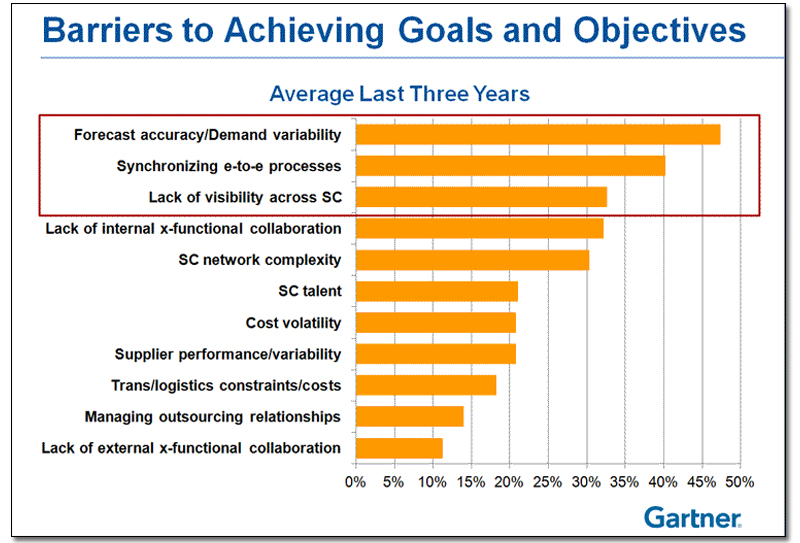
A case in point, says Klappich, is how a TMS might group three orders together to cut logistics costs, but without considering all tasks surrounding that grouping. For example, the warehouse might need to perform kitting on one of the orders, so you might have a carrier arriving for a grouped shipment at 9 a.m. to find all orders aren’t ready until mid-afternoon. “These types of problems still happen day in and day out,” says Klappich.
The remedy, according to Klappich and some leading SCE suppliers, is better platforms for orchestrating supply chain processes. Gartner terms this concept “SCE convergence,” and sees the market evolving toward platforms that optimize end-to-end processes and juggle constraints at all levels. But Klappich warns that while some suppliers are making progress on this vision, the market as whole will take time to progress to full convergence.
Convergence is more than theory, however, and is being pursued by organizations such as Penske Logistics, a third-party logistics provider that has used a TMS from JDA Software for many years, and recently decided to deploy WMS and a Labor Management System (LMS) from JDA.
One key benefit of going with one supplier for multiple applications, according to Tom McKenna, senior vice president of engineering and technology for Penske Logistics, is that it simplifies integration. “It just smoothes the path [for integration] and opens the door for increased customer savings in the long run and greater efficiencies on our part,” McKenna says.
The Vision
The supply chain software market will evolve toward convergence in phases, says Klappich, starting with a first level of trying to achieve better visibility by rolling up data into a common analytical system.
The second level is tighter transactional integration between SCE applications when it comes to basic data or “objects” such as orders, customers or inventory locations. For the most part, end user organizations are “stuck” at level one or two, says Klappich.
Level three is where previously siloed systems still operate independently, but there is effective bi-directional communication between systems and activities are synchronized. This level will depend on suppliers using service-oriented architectures (SOA) that support consistency for higher-level processes such as order fulfillment.
The fourth and final level—converged optimization—would permit simultaneous optimization across functional domains to create feasible plans that take into account constraints across all domains. There also is strong bi-directional communication for this level so that an activity in one area can coordinate activities.
Most SCE suppliers agree with the gist of the convergence vision. At JDA, there has been extensive work to make certain applications, such as TMS and WMS, plan and execute cohesively, says Fabrizio “Fab” Brasca, vice president of industry strategy for transportation. “Our point of view is to make the transportation solution ‘warehouse aware’ so that users start off from the get-go building much better plans that account for the constraints in warehouse execution,” he says.
Brasca says that even before RedPrairie and its WMS and other SCE solutions became part of JDA, which already had TMS from its acquisition of i2, JDA had worked to make warehouse constraints part of TMS for purposes such as dock scheduling. “Having those levels of constraints available within TMS means that when plans are created, it’s done in a warehouse-intelligent fashion,” Brasca says.
JDA is continuing to make more warehouse constraints part of the TMS scope by working on a common data model. In this way, says Brasca, JDA’s TMS has insight “into how the warehouse works” so that warehouse personnel aren’t “sent scurrying” trying to adapt to siloed plans.
Related: Global Transportation Management Development, Visibility, and Sophistication
Penske Logistics, which is starting its rollout of a WMS in the first quarter of 2014, is optimistic that this sharing of key constraints across domains will bring benefits, according to Eric Hepburn, vice president of distribution center management for Penske. “In a streamlined world where we are managing the transportation, have an understanding of what the capacities are within the warehouse, and TMS and WMS systems are talking to each other, the workforce that needs to be there to receive trucks and do everything surrounding that activity is there and ready,” Hepburn says.
For Penske, getting fully onto the new platform will take some time. Today, even within its warehouses that use Penske-owned systems, three different WMS are running. But eventually “everything that’s on a Penske solution will be going toward one platform,” Hepburn adds.
Different Methods
SCE suppliers tend to emphasize different technologies in the pursuit of convergence goals. Oracle, for instance, offers a logistics orchestration solution built on top of its business process management (BPM) engine. The solution is called “Oracle Fusion Distributed Order Orchestration” and enables companies to cohesively manage orders across diverse systems, according to Derek Gittoes, vice president of logistics product strategy for Oracle.
The solution’s scope spans all the way up to order promising, but also helps orchestrate execution solutions such as TMS and WMS. “The reason we built a system like Distributed Order Orchestration is so that organizations can have that end-to-end view of all those steps in the process, and to be able to instruct all those previously siloed systems to do what they need to do in a coordinated way,” Gittoes says.
Oracle has also worked to build tighter integration between its TMS and WMS solutions, Gittoes says, but that the orchestration solution is unique in that it provides a platform for coordinating many types of systems. He also emphasizes that the solution is not a raw BPM engine that needs to be configured by tech experts, but an application with predefined content and easy-to-use setup tools “that are done in a language that an order fulfillment or logistics person understands.”
Related: A Question of Logistics - How Extreme Performance Helps Organizations Manage the Unforeseeable
At Manhattan Associates, several years of work have gone into its “Supply Chain Process Platform,” a common foundation for optimization and integration for all its SCE applications, says Eric Lamphier, senior director for product management with Manhattan. The platform supports workflows that can be either “warehouse initiated” or “transportation initiated,” and which consider constraints across multiple domains regardless of which solution is kicking off the workflow. “When other products are being asked to respond to a workflow, they have to honor their own capacities and thresholds,” he says.
Aiding the effectiveness of cross-domain workflows, says Lamphier, are the years of work Manhattan has put into creating a set of common business objects. Creating a common data model is a significant undertaking that is difficult to accomplish, especially for suppliers who keep acquiring solutions or haven’t committed the development resources to the effort, he says. “Without that common data model, the other building blocks you put on top of it are hard to keep in place,” Lamphier adds.
SCE solutions at SAP also make use of a common data model and workflows, says Markus Rosemann, vice president of the global solution management team for logistics and order fulfillment at SAP. The supplier’s most recent set of SCE solutions also are built on SAP’s HANA in-memory data platform, a data management foundation that he says handles real-time analytics while simultaneously handling real-time transactions.
According to Rosemann, HANA will spot patterns in SCE processes that can be used to improve planning and adjust execution. “With our HANA platform, we can really support Big Data, recognize patterns and learn,” he says.
Rosemann also contends it’s vital to use today’s platforms to improve higher-level processes such as order-to-cash or trade compliance, or to help manage the complex fulfillment networks arising due to the demands of consumer digital commerce. “You want to be able to make the [execution] picture more holistic and have all of this information in a common technical platform, but also relate everything back to the overall business processes,” he says.
End Goals Entice
Klappich sees technologies such as workflow and BPM as key to helping fulfill the convergence vision, but he warns that such technologies require effort to properly configure to meet the most pressing needs of a supply chain. “You’ve got to be careful not to over-engineer this,” he says.
The promise of better integration and orchestration platforms, however, is that the managers in the trenches will spend less time expediting and fixing flawed plans. As Gittoes sees it, it will make life easier because “there will be fewer mismatches between what is going on in the different silos of the organization.”
Penkse’s McKenna is enthusiastic about the possibilities of having WMS, TMS and LMS working in concert without painstaking integration work. “Where we are headed is exciting, because it’s going to make it easier to get systems up and running, and because we’ll be able to much more precise in our planning and execution,” he says.

